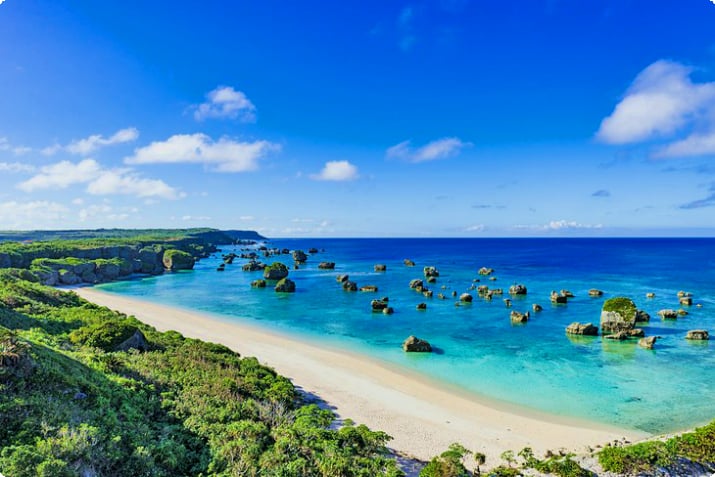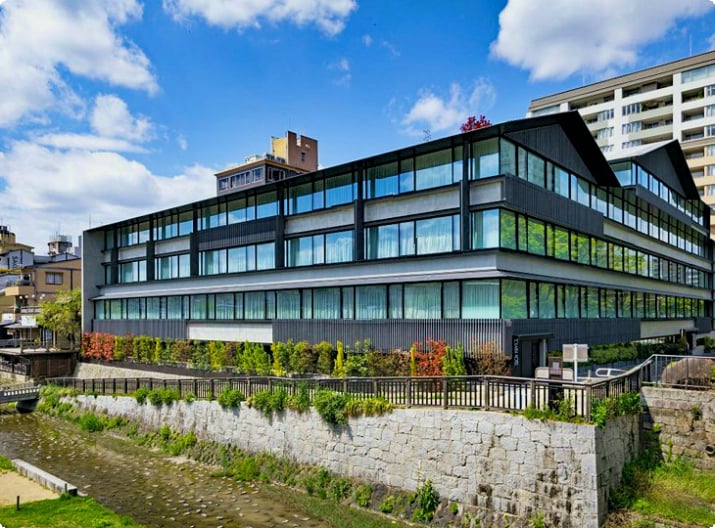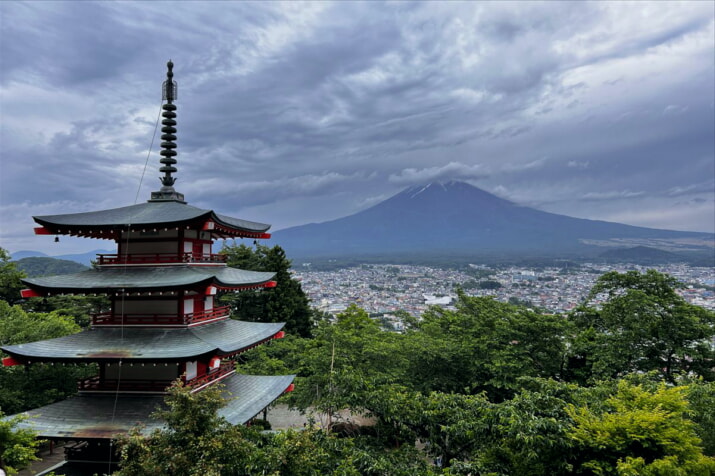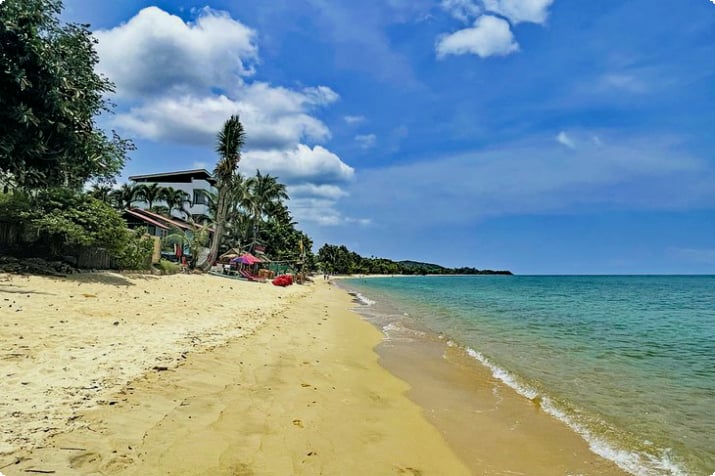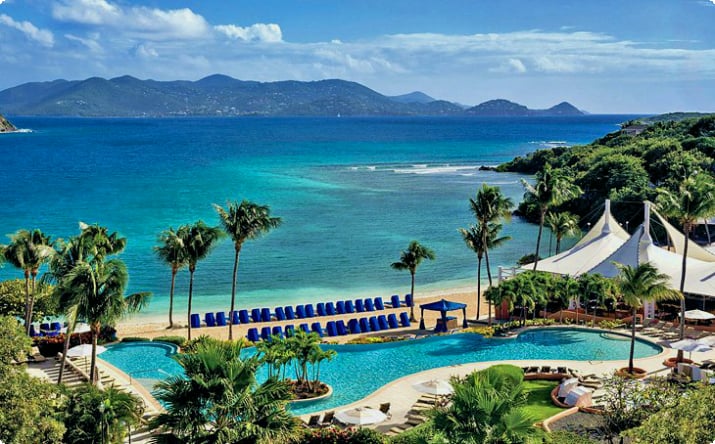Mount Fuji: Japan's Majestic Mountain
Mount Fuji, or Fujisan, is Japan's tallest peak and a symbol of the nation's natural beauty. Celebrated in art and literature, such as the 8th-century poetry of Yamabe Akahito and Hokusai's woodcuts, this nearly perfect volcanic cone is a sight to behold.

Visible from Tokyo on a clear day, Mount Fuji is part of Fuji-Hakone-Izu National Park and draws over a million visitors annually, with around 300,000 attempting to reach its summit. Recognized as one of Japan's Three Holy Mountains, it was added to UNESCO's World Heritage Sites in 2013.
Mount Fuji: Key Information
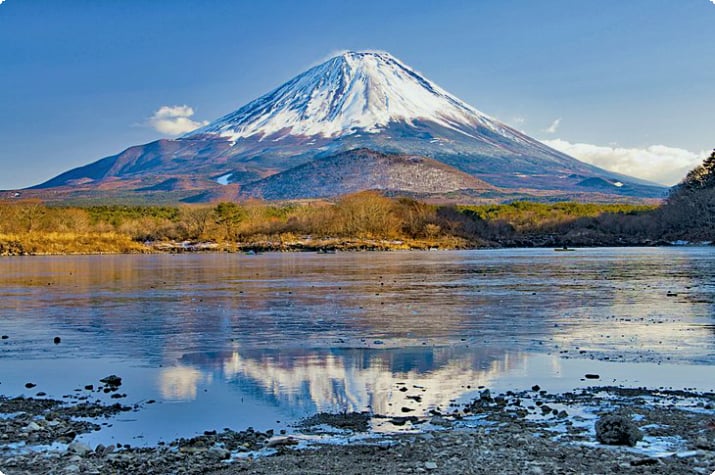
Mount Fuji is a stratovolcano standing 3,776 meters tall, with a base diameter of 40 to 50 kilometers. Its last eruption was in 1707, and while currently dormant, future activity is not ruled out.
Climbing Mount Fuji
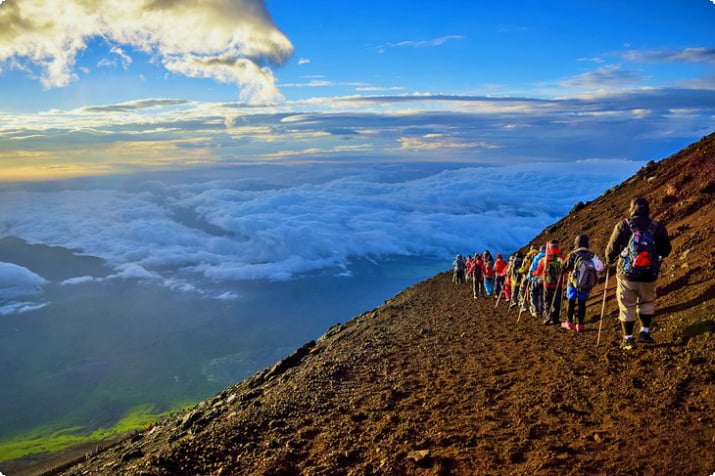
The mountain is busiest during July and August, with four main routes to the summit. The Yoshida Trail is the most popular, offering facilities like mountain huts for climbers. Many start their climb in the afternoon, stay overnight at a hut, and reach the summit by sunrise. Some opt for a continuous climb to witness the sunrise, while others take buses to the 5th Station to shorten the journey.
The Mount Fuji Trails
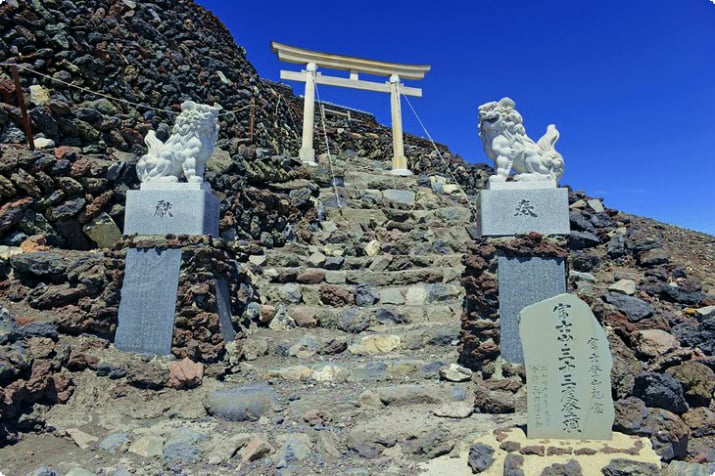
The four main trails are Yoshida, Subashiri, Gotemba, and Fujinomiya, with the Yoshida and Fujinomiya being the most frequented. The Ochudo-meguri trail offers a less strenuous option, circling the mountain at a lower elevation.
The Summit Crater
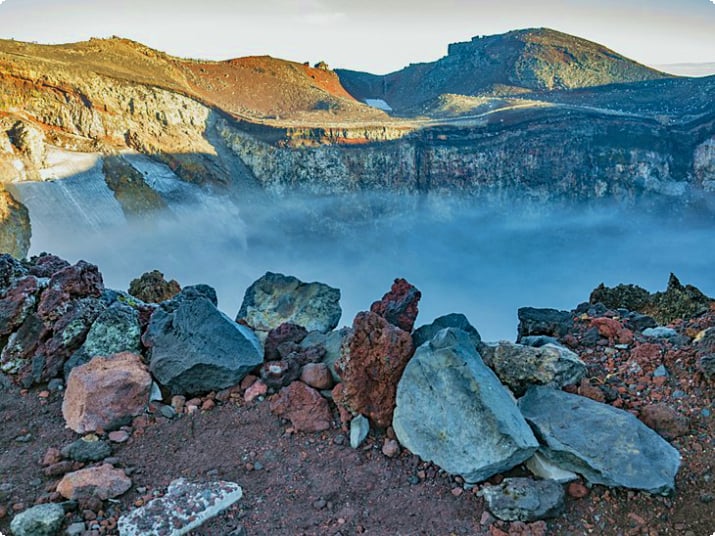
The Ohachi-meguri trail around the summit crater passes eight peaks, including Kengamine, the highest point in Japan. The trail offers stunning views and cultural sites like the Kusushi-jinja Shrine.
Fujiyoshida
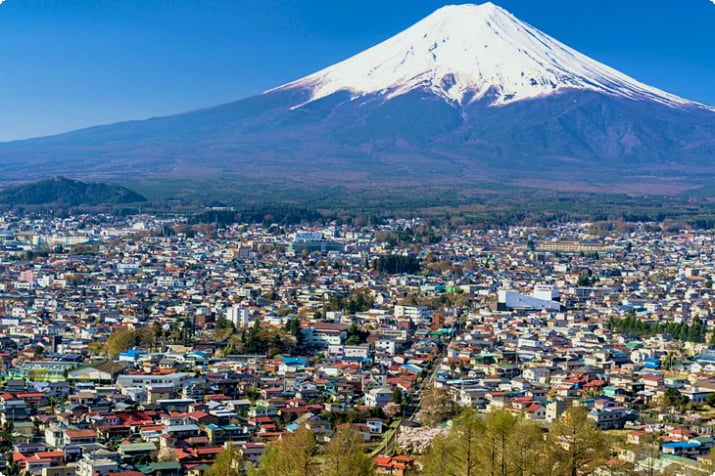
Fujiyoshida is a gateway to Mount Fuji's lower slopes, with attractions like the Kitaguchi Hongū Fuji Sengen Jinja shrine and the Oshino Hakkai village.
Fuji Five Lakes
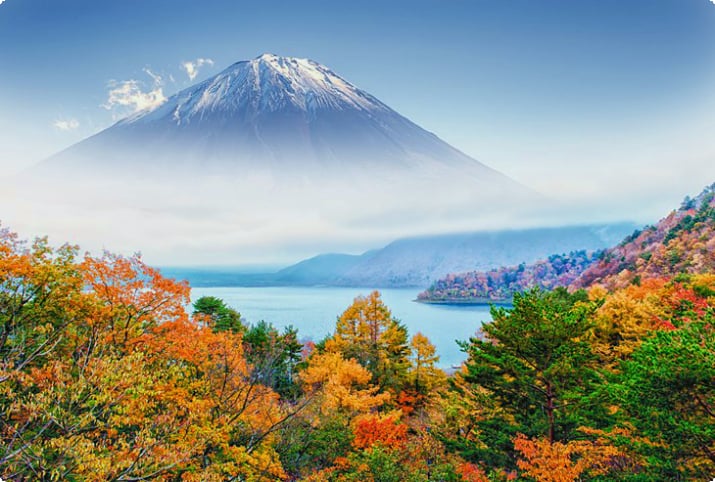
The Fuji Five Lakes region offers activities like fishing and kayaking, with attractions such as The Healing Village.
Lake Ashi
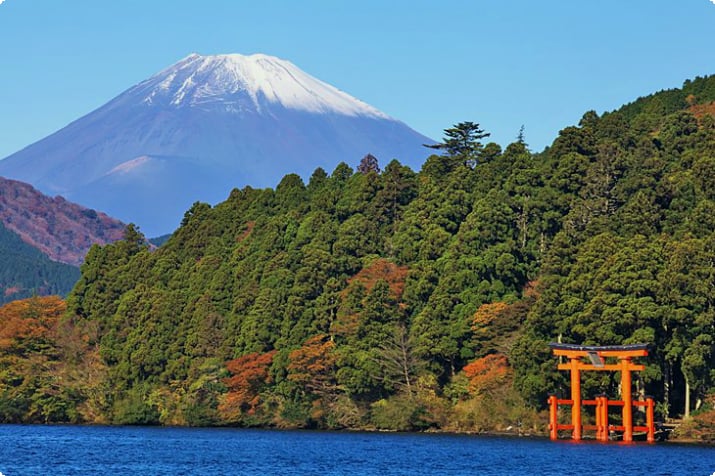
Lake Ashi, southeast of Mount Fuji, is known for its scenic boat rides and views. The Hakone Ropeway provides access to the lake.
Aokigahara Forest
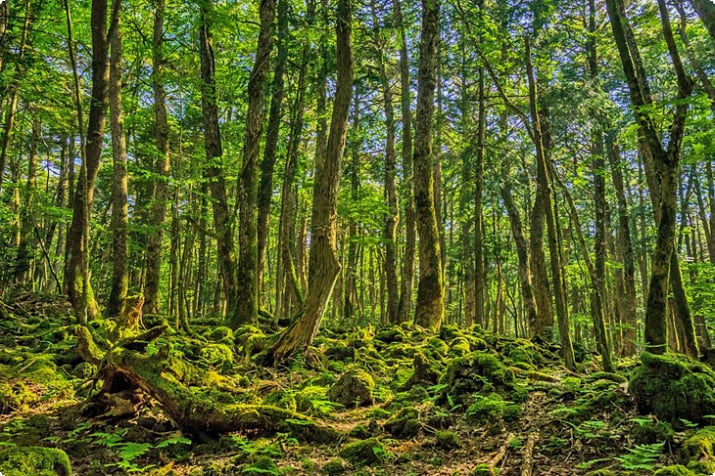
The Aokigahara Forest, known for its dense foliage and caves like the Ice Cave and Wind Cave, offers unique hiking experiences.
Where to Stay near Mount Fuji for Sightseeing
For those looking to stay near Mount Fuji, options include Konansou, Fujisan Onsen Hotel Kaneyamaen, Fuji View Hotel, and Oike Hotel Honkan, each offering unique views and amenities.


